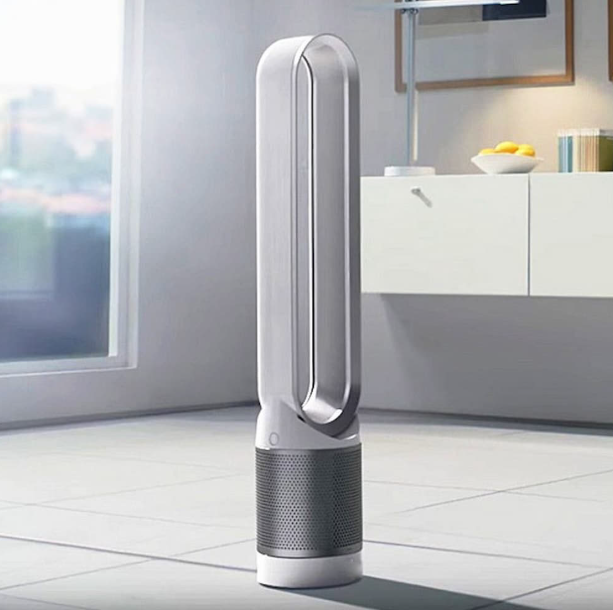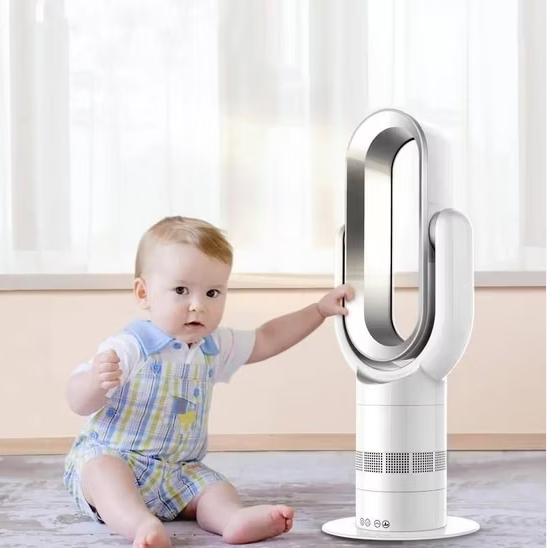When it comes to staying cool, the debate of electric fan vs ceiling fan is a common one. Both types of fans offer unique benefits, but choosing the right one depends on your space, budget, and cooling preferences. Whether you’re considering a portable electric fan or a permanent ceiling fan, this comprehensive guide will compare the two, covering performance, installation, maintenance, and safety. We’ll also share electric fan usage tips, electric fan maintenance, and electric fan safety advice to help you make an informed decision. Let’s dive into the best electric fan guide and explore the pros and cons of electric fans versus ceiling fans!
Understanding Electric Fans and Ceiling Fans
Before comparing electric fan vs ceiling fan, let’s define each type:
- Electric Fan: Refers to portable or standalone fans, such as tower, pedestal, or desk fans. These are versatile, easy to move, and ideal for targeted cooling.
- Ceiling Fan: A fixed, overhead fan mounted on the ceiling, designed to circulate air throughout a room. Ceiling fans are permanent fixtures and often include lighting options.
Both options are energy-efficient alternatives to air conditioning, but their differences in design, functionality, and use make them suited for different scenarios. Let’s break down the key factors to consider.
Electric Fan vs Ceiling Fan: Key Comparisons
Here’s a detailed comparison of electric fans and ceiling fans across several important categories to help you decide which is the best electric fan or cooling solution for your needs.
1. Cooling Performance
Electric Fan:
- Pros: Electric fans, especially portable electric fans, provide targeted, direct airflow, making them ideal for cooling specific areas like a desk, bed, or sofa. Models like tower or air circulator fans can move air effectively in small to medium rooms.
- Cons: Electric fans are less effective in large spaces or for whole-room cooling unless paired with multiple units or strategic placement.
- Best Use: Cooling a single person or small area, such as a bedroom, office, or apartment.
Ceiling Fan:
- Pros: Ceiling fans excel at circulating air throughout an entire room, creating a consistent cooling effect. They can lower the perceived temperature by 4–8°F through the wind-chill effect.
- Cons: Ceiling fans don’t provide direct, intense airflow like electric fans, and their cooling effect may feel less immediate in very hot conditions.
- Best Use: Cooling larger rooms, such as living rooms, dining areas, or open-plan spaces.
Winner: Electric fans for targeted cooling; ceiling fans for whole-room air circulation.
2. Installation and Setup
Electric Fan:
- Pros: Electric fan setup is simple—plug it in, place it on a stable surface, and turn it on. No installation is required, making them ideal for renters or those needing flexibility.
- Cons: Electric fans may need repositioning to optimize airflow, and cords can be a tripping hazard if not managed properly.
Ceiling Fan:
- Pros: Once installed, ceiling fans are a permanent, low-maintenance solution that don’t take up floor space.
- Cons: Installation requires electrical wiring and mounting, which can be complex and costly (often $100–$300 for professional installation). Renters may need landlord approval.
Winner: Electric fans for ease of setup; ceiling fans for a permanent, space-saving solution.
3. Portability and Flexibility
Electric Fan:
- Pros: Portable electric fans can be moved from room to room or even outdoors (for certain models). They’re ideal for small spaces or situations where cooling needs change frequently.
- Cons: Limited range means you may need multiple fans for larger homes.
Ceiling Fan:
- Pros: Ceiling fans are fixed, so there’s no need to move or adjust them once installed.
- Cons: Lack of portability makes them unsuitable for renters or those who need flexible cooling options.
Winner: Electric fans for portability; ceiling fans for fixed, hassle-free operation.
4. Energy Efficiency
Electric Fan:
- Pros: Most electric fans use 30–100 watts, costing about $10–$20 for three months of continuous summer use. Models with timers or energy-saving modes further reduce costs.
- Cons: Running multiple fans in a large home can increase energy usage.
Ceiling Fan:
- Pros: Ceiling fans typically use 15–100 watts, with modern models averaging $7–$15 for three months of use. They’re highly efficient for whole-room cooling.
- Cons: Energy costs can rise if the fan includes lighting or is run continuously at high speeds.
Winner: Tie—both are energy-efficient, but ceiling fans may edge out for larger spaces due to their broader coverage.

5. Maintenance and Cleaning
Electric Fan:
- Pros: Electric fan cleaning is straightforward. Unplug the fan, remove the grille, and clean the blades with a soft cloth or brush. Regular cleaning (every 2–3 months) prevents dust buildup and maintains performance.
- Cons: Dust can accumulate quickly, especially in summer, requiring frequent cleaning to avoid common electric fan problems like noise or weak airflow.
Ceiling Fan:
- Pros: Ceiling fans require less frequent cleaning (every 6–12 months) due to their elevated position, which reduces dust accumulation.
- Cons: Cleaning is more challenging due to the fan’s height, often requiring a ladder or long pole. Blades can collect dust, which may fall into the room if not cleaned regularly.
Winner: Electric fans for easier cleaning; ceiling fans for less frequent maintenance needs.
6. Noise Levels
Electric Fan:
- Pros: Many modern electric fans, like tower or air circulator models, are designed for quiet operation (20–50 decibels), making them suitable for bedrooms or offices.
- Cons: Some models, especially budget ones, can be noisy at higher speeds.
Ceiling Fan:
- Pros: High-quality ceiling fans operate quietly, often around 30–40 decibels, ideal for continuous use.
- Cons: Older or poorly balanced ceiling fans may wobble or produce humming noises, requiring electric fan troubleshooting.
Winner: Tie—both can be quiet with modern designs, but ceiling fans may require more effort to fix wobbling issues.
7. Cost
Electric Fan:
- Pros: Electric fans are affordable, with prices ranging from $20–$150 for high-quality models. No installation costs make them budget-friendly.
- Cons: You may need multiple units for larger homes, increasing overall costs.
Ceiling Fan:
- Pros: Ceiling fans range from $50–$500, offering long-term value as a permanent fixture. They can also add aesthetic value to your home.
- Cons: Higher upfront costs, including purchase and installation, make them a bigger investment.
Winner: Electric fans for lower initial costs; ceiling fans for long-term value.
Electric Fan Usage Tips in Summer
Whether you choose an electric fan or a ceiling fan, these electric fan usage tips will maximize cooling during summer:
- Strategic Placement: For electric fans, place them near windows to pull in cool air or use two fans for cross-ventilation. For ceiling fans, set them to rotate counterclockwise to push cool air downward.
- Enhance Cooling: With electric fans, place a bowl of ice in front to create a cooler breeze. Ceiling fans pair well with air conditioners to circulate cool air.
- Use Timers: Both fan types benefit from timers to save energy, especially for overnight use.
- Optimize Speeds: Use lower speeds for general cooling and higher speeds for extreme heat to balance comfort and energy efficiency.
For more usage ideas, check out this cooling guide.
Electric Fan Maintenance for Both Types
Proper electric fan maintenance ensures longevity and performance for both electric and ceiling fans:
- Electric Fan Cleaning: Unplug the fan, remove the grille, and clean blades and motor housing every 2–3 months to prevent dust buildup. Follow how to clean an electric fan guidelines for safe cleaning.
- Ceiling Fan Cleaning: Use a ladder or long pole to clean blades every 6–12 months. Check for loose screws or wobbling to maintain balance.
- Lubrication: For electric fans with serviceable motors, apply lubricant to bearings. Ceiling fans may also require occasional motor lubrication, depending on the model.
- Inspect Components: Check cords, switches, and blades for wear or damage, and tighten loose parts to prevent noise or instability.
Regular maintenance prevents common electric fan problems like weak airflow or noise. For detailed maintenance tips, visit electricfanatic.com.

Electric Fan Safety Tips
Safety is crucial for both electric and ceiling fans. Follow these electric fan safety tips:
- Unplug Before Maintenance: Always disconnect electric fans before cleaning or adjusting. For ceiling fans, turn off the power at the breaker.
- Keep Away from Water: Avoid using electric fans near water sources, especially when using cooling hacks like ice. Ceiling fans should be kept dry to avoid electrical issues.
- Secure Placement: Place electric fans on stable surfaces to prevent tipping. Ensure ceiling fans are securely mounted to avoid wobbling or falling.
- Check Electrical Components: Inspect cords (for electric fans) or wiring (for ceiling fans) for fraying or damage to prevent electrical hazards.
Electric Fan Troubleshooting for Common Issues
If your fan isn’t performing well, electric fan troubleshooting can help resolve issues:
- Electric Fan Issues: For weak airflow, clean the blades and grille. For noise, tighten screws or lubricate the motor. If the fan won’t turn on, check the cord, switch, or fuse.
- Ceiling Fan Issues: For wobbling, balance the blades using a balancing kit. For noise, tighten screws or check for loose components. If it doesn’t work, inspect the wiring or switch.
If problems persist, consult a professional or consider replacing your fan.
Which Should You Choose: Electric Fan or Ceiling Fan?
The choice between an electric fan vs ceiling fan depends on your needs:
- Choose an Electric Fan If: You need portability, targeted cooling, or a budget-friendly option. They’re ideal for renters, small spaces, or outdoor use.
- Choose a Ceiling Fan If: You want whole-room cooling, a permanent fixture, or a fan that doubles as a lighting solution. They’re best for homeowners or larger spaces.
If you’re still unsure, consider combining both: use a ceiling fan for general air circulation and a portable electric fan for targeted cooling in specific areas.
Conclusion: Stay Cool with the Right Fan
The electric fan vs ceiling fan debate comes down to your specific cooling needs, space, and budget. Electric fans offer portability and targeted cooling, while ceiling fans provide whole-room circulation and long-term value. By following electric fan usage tips in summer, performing regular electric fan cleaning, and prioritizing electric fan safety, you can ensure either option keeps you comfortable. For more guidance on choosing the best fan or maintaining it, visit electricfanatic.com. With the right fan and care, you’ll stay cool and refreshed all summer long!